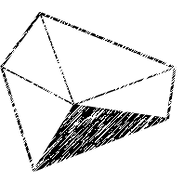




READING LIST


WEEK #01 :
- Hatch, M. (2014).The Maker Movement Manifesto: Rules for Innovation in the World of Crafters, Hackers, and Tinkerers. New York: McGraw Hill.
Maker Movement Manifesto. 11-33.
Knowledge, Learning, Control and Intelligence. 69-91.
- Gershenfeld, N. (2005).FAB the Coming Revolution on Your Desktop: From Personal Computers to Personal Fabrication. New York: Basic Books.
- Söderberg, J. (2011). Free Software to Open Hardware: Critical Theory on The Frontiers of Hacking.
Who is the hacker?. 22-28.
- Martinez, S., Stager, G. (2013). Invent to Learn: Making, Tinkering, and Engineering in the Classroom.
An Insanely Brief and Incomplete History of Making. 11-27.
- Lang, D. (2013). Zero to Maker. Sebastopol, CA: Maker Media.
Access to Tools. 71-89.
Craftsmanship. 91-108.
- Anderson, C. (2012). Makers: The New Industrial Revolution. New York: Crown Publishing.
The New Industrial Revolution. 17-32.
The History of the Future. 33-52.
- Resnick, M., Rosenbaum, E. (2013). in Design Make Play: Growing the Next Generation of Stem Innovators (eds. Honey, M., Kanter, D.). New York: Routledge.
Designing for Tinkerability. 163-181.
WEEK #12 :
- Voyatzaki, M. (2015). ArchiDoct, vol:2(2).
Hacking Architectural Materiality Towards a More Agile Architecture. 10-20.
- Gourdoukis, D. (2015). ArchiDoct, vol:2(2).
Digital Craftsmanship: From the Arts and Crafts to Digital Fabrication. 43-56.
- Aagard, A. K. (2015). ArchiDoct, vol:2(2).
Material and Virtuality. 57-71.
- Sheil, B. (2005). arq, vol:9(1).
Transgression from Drawing to Making. 20-32.
- Sheil, B. (2005). Architectural Design, vol:75(10).
Introduction: Design Through Making. 5-12
- Burry, M. (2005). Architectural Design, vol: 75(10).
Homo Faber. 30-38.
- Burry, M. (2012). in Persisting Modelling: Extending the Role of Architectural Representation.
The Persistance of Faith in the Intangible Model. 26-40.
- Hill, J. (2005). Architectural Design, vol: 75(10).
Building the Drawing. 13-22.
- Glanville, R. (2012). in Persisting Modelling: Extending the Role of Architectural Representation.
Intention and the User. 41-50.
- Oxman, N. (2012). in Manufacturing the Bespoke.
Material Computation. 256-265
- Payne, J. (2012). in Matter: Material Processes in Architectural Production.
Raspberry Fields. 47-61.
- Perez-Gomez, A. (2012). in Persisting Modelling: Extending the Role of Architectural Representation.
The Historical Context of Contemporary Architectural Representation. 13-25.
- Perez-Gomez, A. (2007). in From Models to Drawings.
Questions of Representation. 11-22.
- Pye, D. (1978). in The Nature and Aesthetics of Design.
Techniques. Skill. 43-57.
Invention: Analogous Results. 58-66.
- West, M. (2008). Architectural Design, vol: 78(4).
Thinking with Matter. 50-56.
- West, M. (2012). in Manufacturing the Bespoke.
The Fore Cast. 132-145.
- Thomsen, M. (2008). Architectural Design, vol: 78(4).
Robotic Membranes: Exploring a Textile Architecture of Behaviour. 92-98.
- Thomsen, M., Karmon, A. (2009). in Digital Arts and Culture.
Computational Materials: Embedding Computation into the Everyday.
- How Sustainable is Digital Fabrication? (2014). in Low-Tech Magazine.





